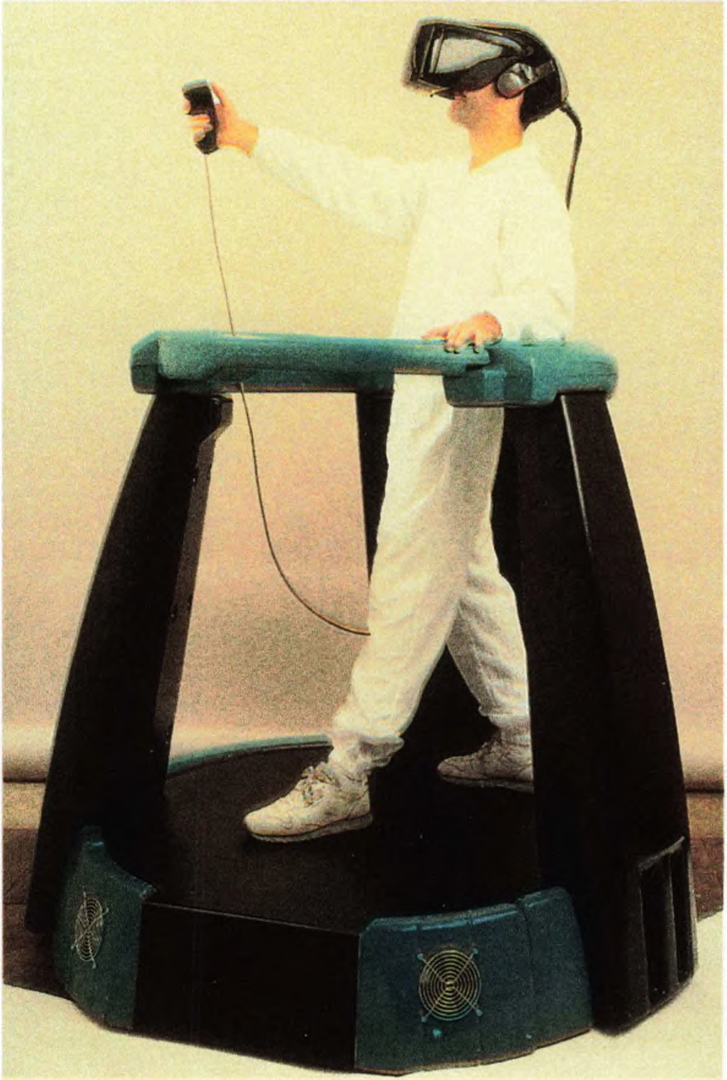“Xenomorph” by Gianulis, Price and Folz
Conference:
Experience Type(s):
Entry Number: 15
Title:
- Xenomorph
Program Title:
- Interactive Entertainment
Organizer(s)/Presenter(s):
Collaborator(s):
Project Affiliation:
- Virtual Reality Entertainment Corporation
Description:
This Virtual Reality Entertainment Corporation (VRE) project is a location-based entertainment environment consisting of four stand-up pods networked for interactive real-time play. The relatively inexpensive PC hardware combined with proprietary software provides a reasonable approach for entering the location-based virtual reality entertainment market. The software for the installation is Xenomorph, a multiplayer, fully immersive, virtual reality game experience that transports the player to a high-tech, futuristic scientific research complex on Mars. The task: save both the facility and its desperate crew from invading alien creatures. Unlike the standard adversarial approach to multiplayer games, Xenomorph offers a cooperative experience.
Xenomorph began in the spring of 1994 with an effort to produce a relatively inexpensive alternative for high-quality multi- player virtual reality entertainment. VRE recruited developers with diverse backgrounds (engineering, computer science, game design, graphic design, sound engineering, and architecture) to create a comprehensive approach to the overall design of both hardware and software components. Some of the design principles applied to Xenomorph were borrowed from VRE’s previous experience with fully immersive virtual reality game design for the arcade market.
The software was designed in an object-oriented fashion so the company could quickly design and produce another product by creating new graphics and audio data with minimal software changes. The design methodology treated all components of the game as objects maintained by a state machine process.
The hardware consists of a Pentium PC with add-on boards for peripheral input and graphics/audio output, a head-mounted display, and a floating joystick for player interaction, all residing in a custom-designed interaction pod. Only the head-mounted display, the joystick, and a debit-card reader are visible to the player. A custom-designed sound system is also incorporated into the pod for multi-player communication.
Graphical data were generated using various packages such as Autodesk’s 3D Studio, Animator Pro, and Adobe Photoshop. Sound data were produced using Ensonic keyboard equip- ment in conjunction with various wave editors and audio samples from CD libraries and live recordings of voice-over professionals.
A Division VPX graphics card generates the 3D environment and a Creative Labs AWE32 sound card produces 3D sound and voice effects. A Polhemus InsideTrak follows the player’s head and floating joystick movement. In the game, the joystick is represented as an extension of the player’s hand holding a weapon. A Visionetics Genlock card produces various overlay graphics necessary for game play (map displays, scoring information, playing of animations, etc.). For multi-player interaction, a standard net- work card is used in conjunction with custom software to transfer locations and actions of the players and other objects to the other pods.
Virtual reality entertainment systems are the future of video games. With the never-ending increase in graphics quality and realistic effects in existing video games, the next logical step is to give the player the full experience of interacting in a computer-generated world. Unlike the dedicated video game of today, a virtual reality system can be upgraded with new software whenever it becomes available, which allows players to choose from a library of experiences.





